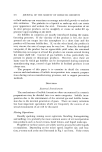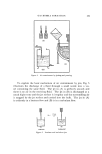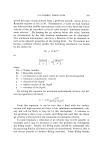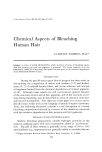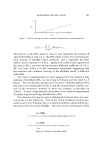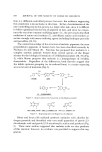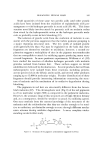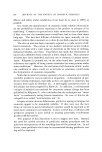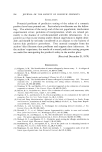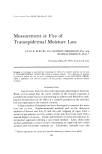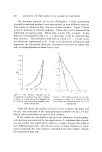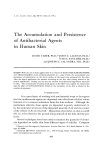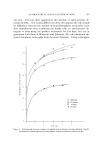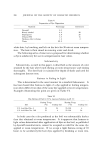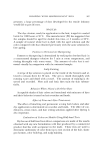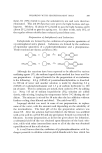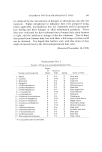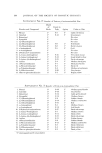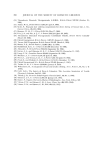326 JOURNAL OF THE SOCIETY OF COSMETIC CHEMISTS Figure 2. Elimination of vortex by using spatula but is mixed uniformly. The photograph in Fig. 2 was taken at the same mixer rpm as Fig. 1 but a spatula was placed on one side of the beaker to serve as a baffle. The absence of vortex and bubbles clearly indicates the effect of the baffle. Another effective way to suppress a vortex when using a propeller mixer is to tilt the mixer and place it off-center. This will create a dif- ference in the velocity with which the fluid impinges on the tank wall and a vortex formation is thus prevented without using baffles. Some high-speed mixers are provided with built-in baffles to mini- mize the chance of surface turbulence and aeration. However, it is gen- erally better to place the head ooe a high-speed mixer as near the bottom ooe the process kettle as possible to avoid air entrapment. In the cosmetic industry, an anchor-type mixer is often used to pro- cess high-consistency creams. Although such a mixer is normally op- erated at a relatively low rpm, air entrapment is still possible if the mixer tips are not completely covered by the product. As illustrated in Fig. 3,
GAS BUBBLE FORMATION MIXER TIP • CAVITY Figure 3. Cavity formation in anchor-type mixer 327 if a high-consistency cream is made in such a kettle, the uncovered mixer tips can create cavities behind them as they rotate in the cream. As these trailing cavities are filled, air is often trapped and dispersed into the product. For a similar reason, a planetary-type mixer can often in- corporate a considerable amount of air into a viscous product during its operation. The above problem in an anchor-type mixer can be solved simply by increasing the batch size or shortening the mixer tips so that they are completely covered by the product. But in other cases, it may be necessary to redesign the mixer so that such cavities are not created dur- ing the mixer operation. Paddle mixers are also widely used in the cosmetic industry to process creams and pastes. In using these mixers, the fluid level should be suf- ficiently high to cover the paddle completely so as to avoid excessive surface turbulence. A processing kettle equipped with a paddle mixer fitted with scraper blades plus a built-in high-speed homogenizer is quite ideal in processing cosmetic emulsions and suspensions. If neces- sary, such a kettle can be designed to operate under vacuum for a com- pletely air-free operation.* In some instances, bubble entrainment in a mixing process can be minimized by revising the manufacturing procedure. For example, the emulsifiers used in making a cream can often encourage bubble forma- tion during the emulsification. Since cosmetic emulsions are usually made at a high temperature at which the viscosity of the emulsion is usually low, most of the entrained bubbles can escape during the initial stage of emulsification. To obtain a good emulsion, mixers or homoge- * Eppenbach Agi-Mixers made bv Giffo}'-Wood Co. of New York, N.Y., have these features.
Purchased for the exclusive use of nofirst nolast (unknown) From: SCC Media Library & Resource Center (library.scconline.org)



